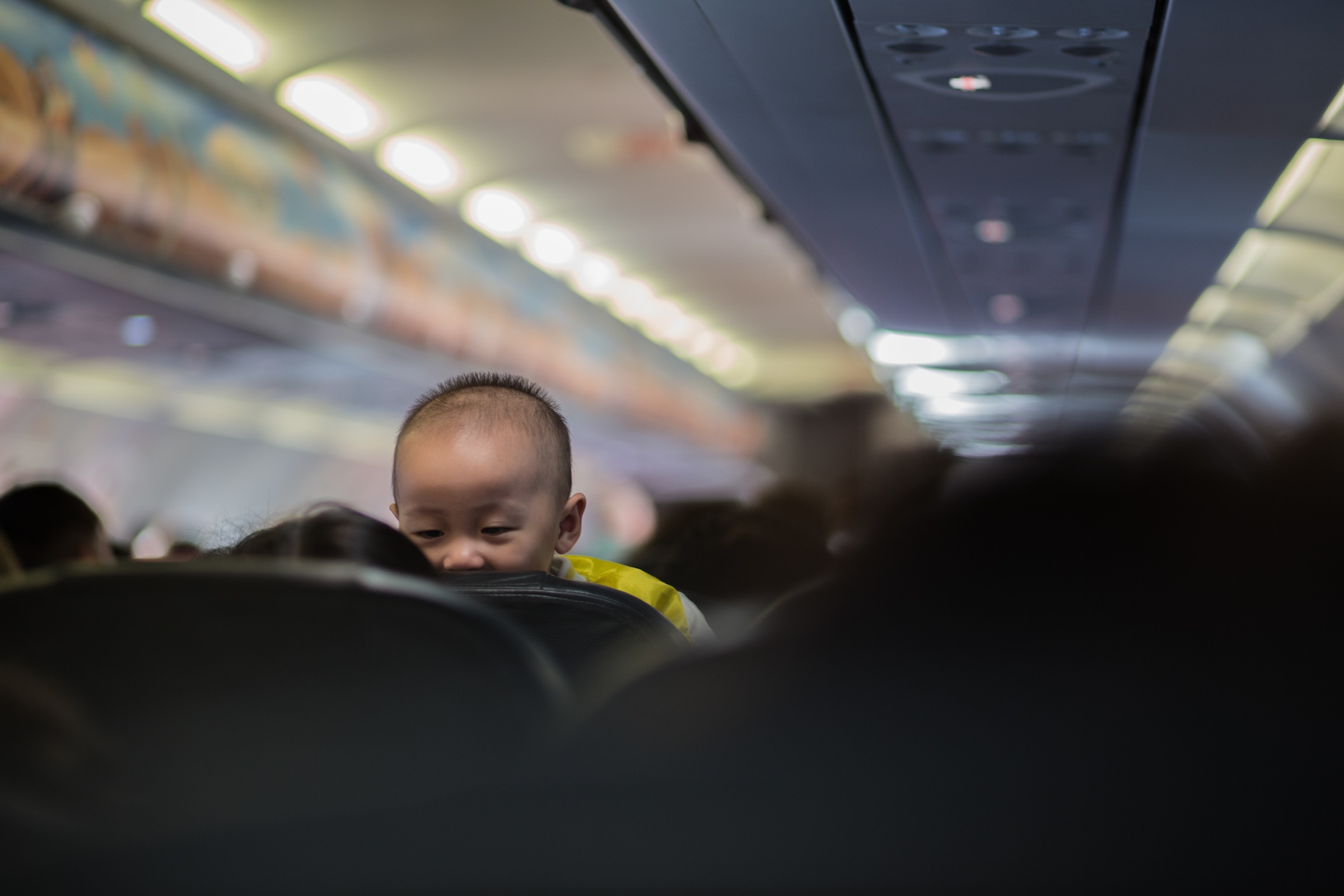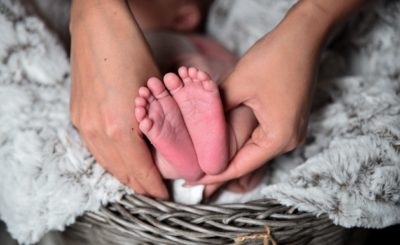Air travel with a young child can be a daunting experience, often deferred as long as possible. With a bit of forethought, it can be not just manageable, but actually an enjoyable part of the trip. How often do you get to spend one on one time with your toddler without them being able to run off? Here’s a chance to spend hours and hours and hours doing just that! Realistically, it’s a big part of the trip for them, and it can be a really memorable experience for them. So take some time, plan it out, and enjoy.
How will we split the trip?
This is a tricky one. Travelling longhaul, many families choose to make multiple stopovers, worried that their child will barely sleep in the air or will lose patience midway through a longer trip. Surprisingly, children often doze off in flight, the background white noise and the relatively dim cabin can really help. If you then have to unload and reload onto aircraft multiple times this can be more exhausting than having long but single flights.
How do we time the flights?
It depends on how long your overall trip is. If you are setting off on a long distance flight, it can make a lot of sense to take off in the early evening. Encourage your child to have a good energy expenditure in the day, eat some “normal” food in the day, and then put them to bed on the plane. If you are hoping your child will eat meals on the plane, there may be significant disruption to their potential sleep. So if possible, post meal, ready for a sleep is a good start to the trip.
If you have a relatively short flight, it makes sense to travel in the daytime. It means disruption to overnight sleep is minimised. Taking a 4am flight means you have to be at the airport at 1-3am, so leaving home at however long beforehand that takes means an entire night of terrible sleep for you as well as for them. Taking a 11am flight for a few hours at least means you get a normal morning wakeup and potential for sleep disruption is more about the loss of a day sleep for them rather than an entire night for all of you.
What food can I bring them?
Check out what your airline offers for your age of child. Most have baby pouches available for <2 year olds (although trying to feed a 20 month toddler a pouch was met with reasonably high disdain when we tried it, and a kids’ meal for the >2 year olds. We’ve always found it helpful to bring some of our own stock too. Contact your airline for more information. Some provide the food for every child, but for some airlines, food has to be pre-requested. So call ahead and make sure food is set aside for your child. (On a quick side note, we’ve found that when food is offered, just take it. Even if the child is asleep. Even in Business class. Once it is put away, we have never been able to get it back. So if you have anywhere you can put the meal, take it when offered and give it to your child when they wake.
Flying with a baby, we bought puree pouches once through customs (for international flights) as most purees come in pouches of >100ml. We found that (although overpriced) the newsagencies in most international departure lounges have a few options. We also had a bunch of pre-packaged rusks to give him something to chew and suck in case of ear popping, and for entertainment. Bring a lot more than you need, as picking something up off the floor of a plane and popping it back into a baby’s mouth has potential to disrupt your holiday with a variety of gastro-type events.
Flying with a toddler, we brought snacks. There’s little hope of “excellent nutrition” for the flying days, staving off a hungry toddler is enough to hope for. Many of the kids’ yogurt pouches in the supermarkets come in 70ml containers. These can be frozen and taken with you, allowing them to defrost slowly, keeping them fresh for a bit longer. We also brought some of those cheese and cracker pre-packs, some boxes of sultanas, some pre-packaged kids’ cereal bars, and two drink bottles. Again, having a bottle roll off under people’s feet isn’t ideal to give back to a child to drink, and washing bottles in the bathroom of a plane can be a relatively unsanitary act. We bought a couple of bottles of mineral water once through customs so we had a relatively reliable source of water to top up bottles in flight. Most airlines give bottled water, but some will also offer tank water, which can be a bit less potable. The price of a couple of bottles of water is less than the wasted cost of a holiday when you are confined to a hotel bathroom with gastro. Don’t forget to anticipate the time en route to and in the airport, as well as during any stopovers. If international transfers are involved, look up the stopover airport to see what food you may be able to buy there. It’s common that all the food you have brought has to be thrown away in quarantine bins on arrival; look this up ahead of time so you know how much to bring and how to source a new selection of food if needed mid-trip.
What can I bring to entertain them?
Ideally a variety of relatively small, quiet, fun activities. Some familiar, and some new. Some parents have gone so far as to wrap toys as “gifts” to unwrap mid travels. We haven’t ever found the time to do this. And also then there will be wrapping paper everywhere. And customs might want to unwrap them anyway. We bring stickers. They can be stuck almost anywhere. On the child. On the seat. On the table. On the magazine. A variety of sheets of them. It’s up to you if you want to use them as a reward for good behaviour, or as a pre-emptive gift for anticipated good behaviour, but we find the latter gives better results in the short term of a flight. Also “Melissa and Doug Water Wow books”. Rather than continually scrabbling around for lost pencils, wishing your pencil sharpener hadn’t been confiscated by security, these books are re-usable and reveal brightly coloured pictures when painted with the included paintbrush filled with a few mL of water. The relatively dry environs of the aircraft mean they dry rapidly, allowing frequent re-use.
It’s up to you if you want to bring an ipad or similar device for them to use. We are firm believers in no screens before 2 years and very limited screen time after 2, but a plane trip is a relatively small amount of time relative to their normal day-to-day, so it seems reasonable to adopt an almost “anything goes” approach to inflight management. Think about how earphones will fit your child, and also ensure you have a charger and adequate charge before setting off. And we’d advocate bringing something non-battery operated as backup anyway. Don’t bring bubbles, balls, items which may struggle with the pressure changes, and items which will cause upset or damage to other passengers (this includes very noisy toys).
Any other things to bring?
Antibacterial wipes. As we’ve mentioned, planes can be relatively dirty environments. Your child will potentially be chewing or licking or touching everything within reach. We like to wipe down the area before too much contact has taken place. Pay particular attention to the remote control for the entertainment system and the tray table.
A small blanket if possible. Most airlines will offer one, especially if you ask, but most are surprisingly prompt at asking for them back before descent to the destination. If your child is sleeping, it can be quite demoralising to try and pull off the blanket without waking them.
Nappies. And wipes. Excess amounts of each. And at least one change of clothes each. Sometimes there will be prolonged periods of “seatbelt sign”. You may not be able to change your baby the moment you sense you probably need to change them. The chance of poonami seems much higher in flight compared to all of the rest of the time. So be prepared. We bring a disposable change mat when we travel and put it on top of the change table in the tiny toilet. And some kind of shoulder bag to put all your nappy equipment in while you change them. There aren’t many clean, dry, roomy, stable surfaces in a plane toilet, so it is worth changing right before you board, and then having everything in a shoulder bag/to hand when you have to use the change table at altitude.
Some means of carrying your child in the airport. Many airports now offer strollers free of charge in the airport. Others have child seats in the luggage trolley. If you aren’t sure, remember that there can be quite long distances to cover in an airport, so think about ways to transport your (potentially sleeping) child as well as all of your hand luggage. We’ve been very impressed by the mountain buggy bagrider. It’s a hand luggage suitcase which incorporates a child’s seat into the handle. Other options include baby carriers, which are a wonderful way of freeing up your hands to move bags or hand over passports etc, but usually aren’t allowed to be used in flight.
Depending on the airline and your ticket, you may also be able to check in your stroller at the gate, meaning you have it there until you board. Don’t rely on this without checking in advance.
Anything else?
We’ve been fortunate so far to always have 2 adults when flying with our children. We’ve found it makes a difference if we have meals at separate times so one of us can eat while the other holds or entertains the children. To accomplish this, we usually order a special meal for one of us and a normal meal for the other (eg we ask for vegetarian or Asian vegetarian or something else slightly different if available) when we are booking the flight. The special meal is usually brought out early (often at the same time as the children’s meals) and the other one can be half an hour or so later. This gives us enough time for there to only ever be one of us eating and only ever one of us who has a table covered in tray and food. We’d suggest avoiding alcohol as much as possible, after 20 hours of travel with a toddler your brain will be addled enough as it is.
Check your baggage allowance carefully. Most infants <2years travel free or for 10% of the adult fare, provided they don’t have their own seat. They usually have a “no baggage allowance”, but most airlines also state that infants can have 3 infant items, which can include buggy, travel cot, car seat or similar. These are checked into the hold. If you choose to purchase a seat for your child, you may be able to bring your child’s car seat onboard the aircraft and use it for their seat in flight. Only some car seats are approved, and obviously this is then a fixed item you can’t pop into the hold if the child would rather sit on the reclined seat etc. It does allow them to remain more securely fastened than otherwise. (Our oldest has been able to undo the plane seatbelts since well below the age of 1, and loosened them enough to slide out from around 6 months of age.) Carrying a car seat around the airport as well as your bags and a toddler can be cumbersome, which we suspect might be a significant reason you don’t often see this option being utilised on-board. Never assume you will be able to do this, check with your airline prior to bringing it along.
If not using bus/train/rental car/family, look up “family taxis” in your destination city. There are many great options which mean a taxi with pre-arranged child seats in the form you usually use will be waiting for you when you arrive.
Enjoy your trip!



